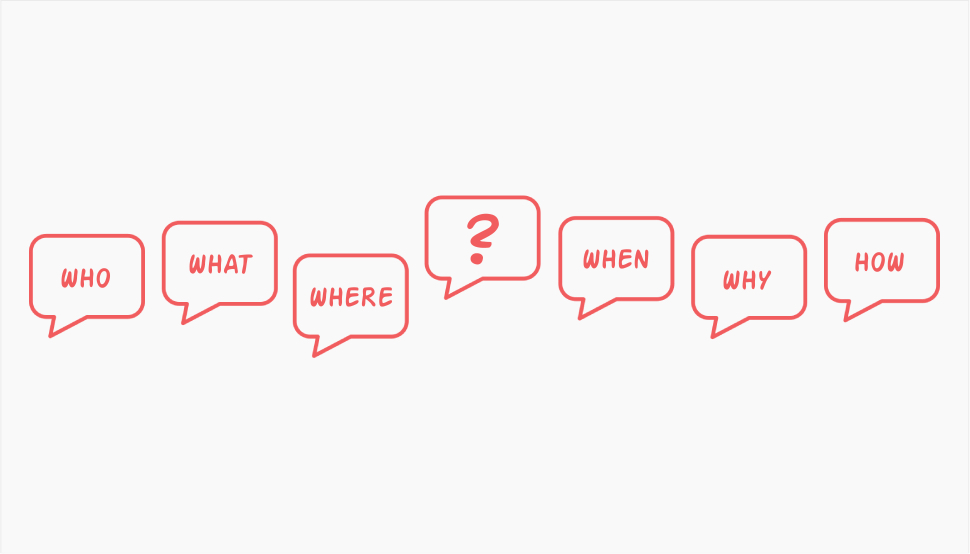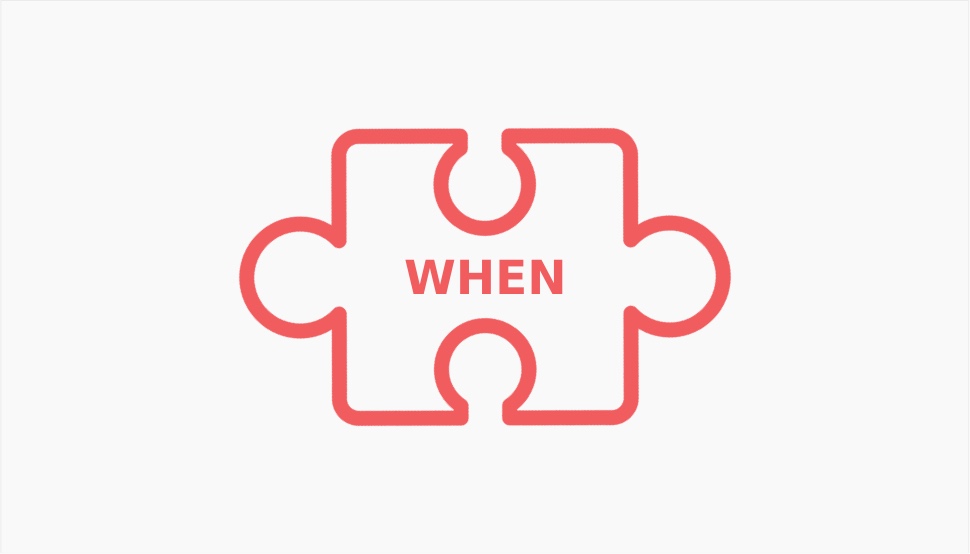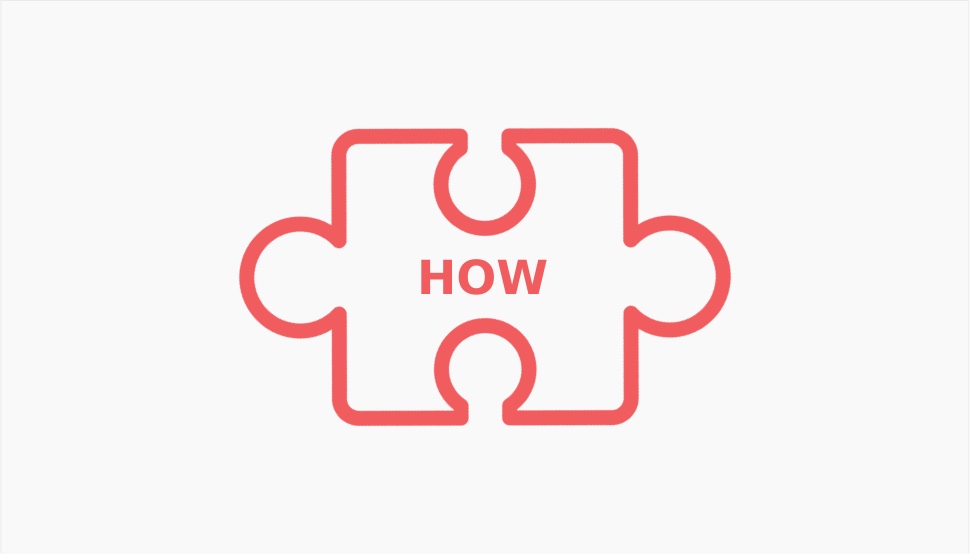Create High-Converting Content Using the 5 W’s and H

It is no secret that quality content is the foundation of any type of blog or website. And although crafting your content strategy is very often a fun and creative process, at some point you may simply feel stuck and blind to see inspiration anywhere around you. The pressure of knowing you have to offer unique value to stay competitive is not of any help in this case, since the creativity that is needed to create original content can only flow when you feel relaxed and free. So how do you bridge this moment of stuckness and get your writing mojo back on the track? We learn the native language in a dialogue with our caregivers, so thinking in the form of dialogue feels as natural as breathing. That’s why the widely known and abundantly used technique like asking the 5 W’s and H questions is always effective to get you not only to start writing but also to write a quality, well-informed article or create any other type of content as well.
Apart from providing you with the basic structure for your content piece, the 5 W’s and H technique can also make your content more engaging and interactive as it may add that light, conversational tone that everybody gets hooked on easily.
In this article, we’ll show you how to use the 5 W’s and H questions to write better articles, provide more value to your audience, and make the writing process as smooth, easy, and natural as possible. Stay tuned to read more:

The 5Ws and H questions framework is mostly related to journalists who use it to help them write their articles. Historically, this approach actually comes from philosophy – it has relatively recently been established that Aristotle’s Nicomachean Ethics is in fact the source of this framework. Today, the 5W’s and H framework is the golden standard of journalism and a common rule used by all kinds of news editors and reporters all across the world.
Originally used by journalists, these questions found their implementation in many other fields too, from law and police investigations to medicine and everything in between. The secret to their effectiveness is simple: they help you stay grounded and objective and not miss any important information about a certain topic, however specific aspects of it may be intriguing.
5 Ws and H include six questions that help you research, write, understand and present any kind of story, event, or similar piece of information. Moreover, they are also very useful in crafting a marketing strategy for your blog, email campaign, and similar. Those questions are:
-
Who?
-
What?
-
When?
-
Where?
-
Why?
-
How?
As simple as it may seem, just answering these questions in different contexts can provide you with a lot of essential information that you need to start a business, craft a content marketing strategy, write an article, set up a website, and what have you. Now, let’s see how exactly this tool can be useful for creating high-converting content.
Although content creation sparks a lot of creativity, sometimes we may find ourselves blocked by so many different directions we can choose to follow. And however well we may know our target audience, writing an article or producing any other type of content can still sometimes feel like taking a shot in the dark. That’s exactly why the 5 W’s and H approach is so useful.
Who

You can never know your target audience too well. Each time you are creating a piece of content, it is useful to ask yourself who exactly you are creating it for. You are surely aware that you can’t reach all the segments of your audience in every piece of content that you produce, so you need to ask yourself who are the ones that will benefit the most from your content, which is the segment you are creating for this time?
This of course implies you already have some knowledge about the shopper types, buyer persona, and similar classifications of your target audience. The way to ask this question may include many different tools, from surveys and interviews to help desk chats and anything else that comes to your mind and allows you to get to know more about the segment of your audience you want to address your strategy to this time.
If you are not the one creating all the content for your website, you could also ask yourself who of your associates is the best choice for creating that particular piece of content in that case?
What

After you define your Who question, the next logical step is to ask yourself what exactly you want to achieve with that particular content piece. You may want to boost engagement, increase traffic, improve conversions or build loyalty and that’s all great but you can do it all at once with one content piece. So choose one or two objectives and then ask yourself what could your audience get from your content that would help you achieve your objective. Do you need to educate, amuse, inspire or engage with them, and offer a solution to their problem – when you know what your customers expect from you, you will also get the answer to what kind of content you need to offer.
When

The question When inspires you to introduce a time framework in the process of creating content. First, you have to know how much time it will take to produce the desired content, and then you need to explore the best time to publish it. Do you need to produce a content piece urgently or there may be some better moment in the future – a holiday, a birthday, or a season that could contribute to its reach? Are you creating evergreen content or a seasonal piece that only makes sense in a specific moment in time – when you have the answers to these questions you can move to the next one.
Where

The question of Where in this context refers to where would be the best place to share your content to reach your target audience or simply put – which marketing channel works best for your target group. If you have done your homework and know your audience well, and understand their habits and behavior, then this question will not require much extra research to find the answer. But, it is always a good idea to remind yourself of all the marketing channels you have available so that you don’t miss a good opportunity just because you overlooked some channel you haven’t used for some time.
Why

The point of the Why question is to help you define the mission of your content. It invites you to consider that particular content piece in the light of the big picture – why does this content matter? On the other hand, it also invites you to understand your customers more precisely – why would your content matter to your customer? Knowing the answer to these questions allows you to be more convincing in presenting and sharing the content.
How

When you have all the essential questions answered, the only thing left to think about is how you get it all done in the most efficient manner. This means revising the whole strategy to check whether you missed something or to get an idea of how some aspects can be improved. You may also ask yourself how this piece of content reflects on other segments of your audience that are not targeted in this case – the answer will allow you to make a few more refinements to your content too.
In Conclusion
Even the greatest idea can easily dissipate if you don’t provide a solid structure to bring it to life. That’s the greatest value of the 5 W’s and H approach – it helps not to overlook any aspect of the content piece and the effect it will have on your audience. It also allows you to define your goal very precisely and the more structured, precise, and goal-oriented you are with your content – the better effect it will have on the conversions on your website.
Now, don’t feel obliged to follow through with all these questions each time you are creating a piece of content, the point of this approach is to help you when you need a push and to provide you with one more framework to check your content strategy consistency. Nothing is written in stone and sometimes the best and most fruitful ideas don’t fit into any framework at all. Use what works for you and good luck!



